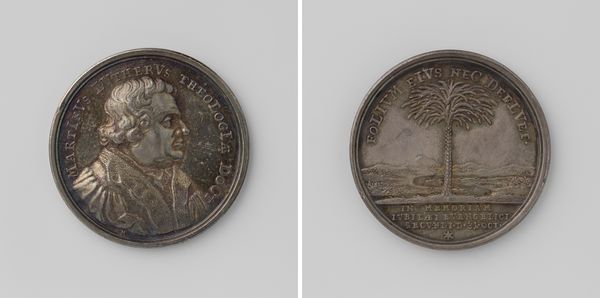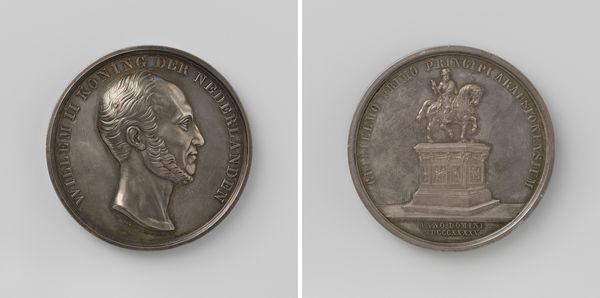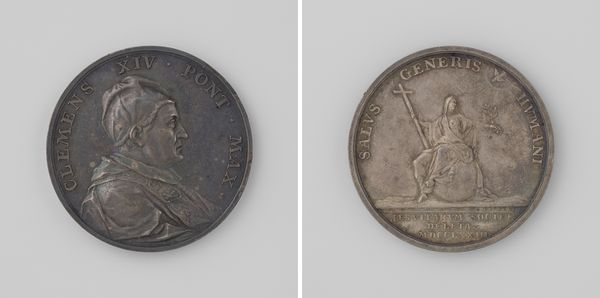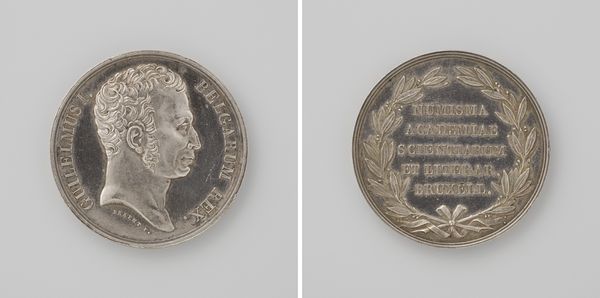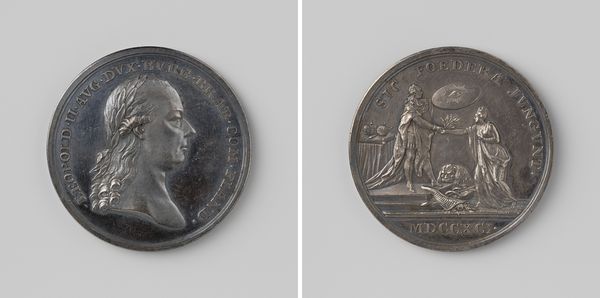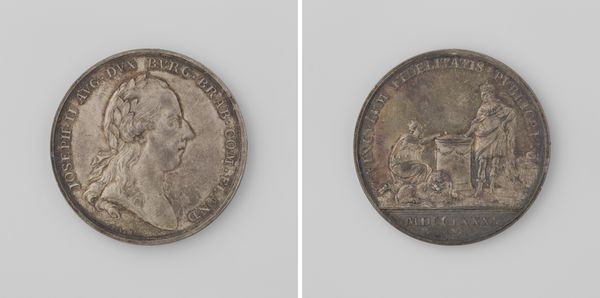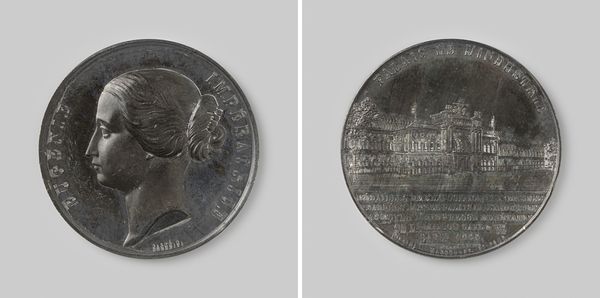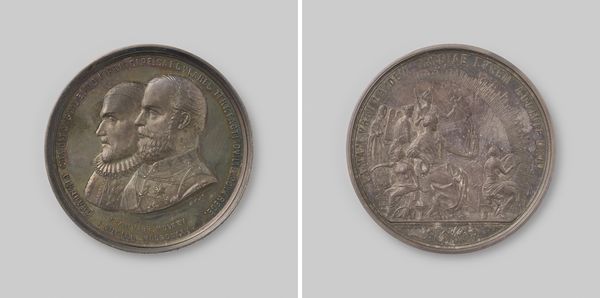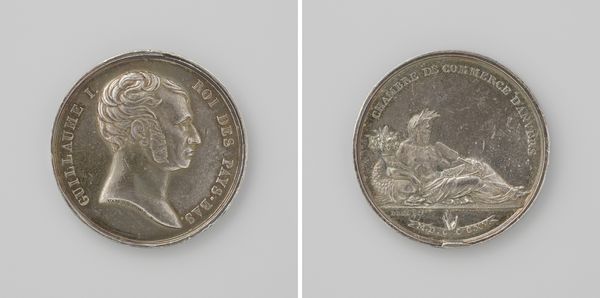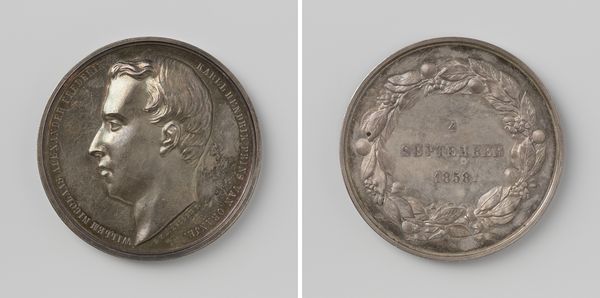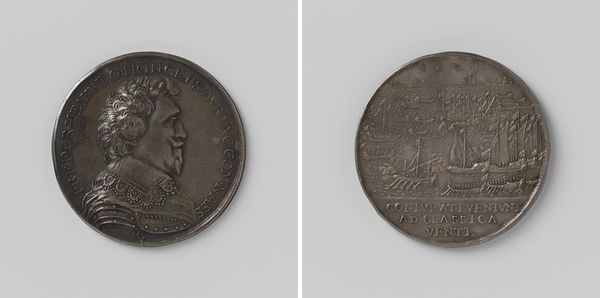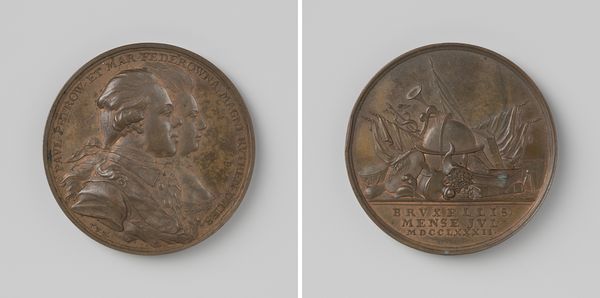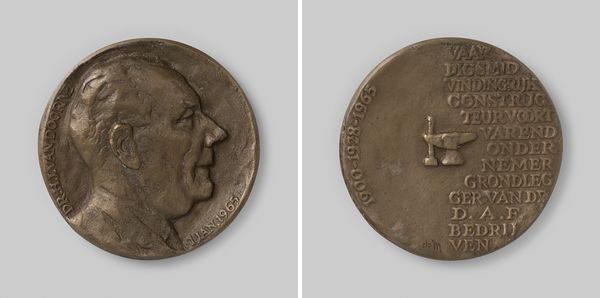
metal, relief, sculpture
#
portrait
#
neoclacissism
#
metal
#
sculpture
#
relief
#
sculpture
#
history-painting
Dimensions: diameter 2.7 cm, weight 10.69 gr
Copyright: Rijks Museum: Open Domain
Curator: Welcome. Before us, we have a metal relief from 1824, "Oprichting van het monument voor de Slag bij Waterloo 1824," by Joseph-Pierre Braemt. It depicts a portrait on one side and a monument on the other. Editor: My initial reaction is of restrained solemnity. The metallic sheen imparts a certain dignity, but the relatively small scale brings it into an intimate space, wouldn’t you agree? Curator: Yes, the artist's choices serve to reinforce the historical significance and reflect on specific neoclassical elements, observe the deliberate composition and the lines. Notice the profile portrait’s precision, emphasizing idealised forms representative of authority, positioned to mirror the monument’s ordered structure on the reverse. The design adheres to clear, rational principles characteristic of neoclassical art, imbuing a sense of enduring historical gravitas. Editor: What strikes me most, thinking materially, is the labor that went into it. Each line, each subtle curve in the king’s profile, the meticulous carving on the lion—all rendered in metal, it shows the immense control and craft the artist needed to shape and mold and control the medium into telling of the great undertaking represented. Consider the politics of memorialization and manufacture intersecting in this small object. It's not just an aesthetic item. Curator: Precisely, and that’s reflected in the symbolic arrangement. The choice of metal—perhaps bronze or silver—is essential as well, contributing to the artwork’s lasting appeal but further reinforcing connotations of strength, power, and timelessness, core to communicating political stability through art during that era. Editor: Right, beyond that—it speaks volumes about production during that period, how these items entered circulation, became consumed and perceived—perhaps the symbolic nature would lose out compared to how well wrought it happened to be, like we find often at such scale, even with commemorative pieces such as this. Curator: That's certainly food for thought, viewing art through both lenses certainly gives you a richer understanding. Editor: Indeed, now I feel I understand and see it differently myself, how material shapes its reception, influencing interpretation just as profoundly as its structural aspects.
Comments
No comments
Be the first to comment and join the conversation on the ultimate creative platform.
